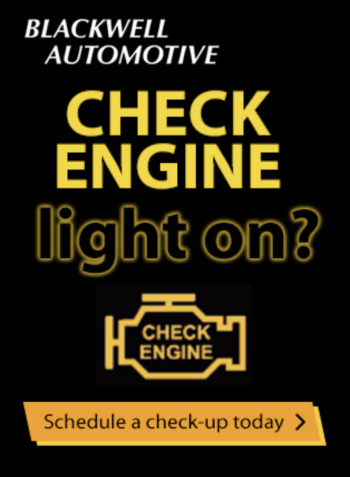

Welcome to Bumper to Bumper Radio!
Drive in anxious and cruise out confident with the best automotive information for your vehicle! Tune in to KTAR News 92.3 every Saturday from 11 a.m. to noon as Matt Allen helps listeners with their car problems. The show call in number is 602-277-5827.
Latest News From Bumper to Bumper Radio

On the week, motorists in 32 states are paying less to fill up compared to a year ago. As the national gas price average drops to $2.46 it sets a new low price for the year and is cheaper than a year ago by two cents. The last time the daily national gas price average was cheaper year-over-year was 18 months ago on July 6, 2017 when gas prices were $2.24 (versus $2.26 on July 6, 2016).
Not only is today’s national gas price average cheaper year-over-year, but also is 31-cents cheaper than a month ago and on the week, 24 states saw gas prices drop double digits.
“Cheap crude oil prices are driving fuel savings at the pump,” said Jeanette Casselano, AAA spokesperson. “Last week crude dropped to its lowest point of the year at $50/bbl. However, this week’s Organization of Petroleum Exporting Countries (OPEC) meeting could cause crude oil prices to jump if the organization decides to reduce crude production.”
OPEC is expected to make an announcement on crude production at its December 6 meeting in Vienna, Austria. The scheduled OPEC meeting has not had a negative impact on pump prices so far.
Quick Stats
The nation’s top 10 largest yearly increases are Nevada $3.15 (+44 cents), Arizona $2.80 (+41 cents), Hawaii $3.64 (+38 cents), California $3.53 (+36 cents), Utah $2.86 (+35 cents), Wyoming $2.84 (+33 cents), Washington $3.30 (+32 cents), Oregon $3.12 (+29 cents), Idaho $2.90 (+26 cents) and Montana $2.78 (+15 cents).
The nation’s top 10largest monthly decreases are: Nebraska $2.25 (-46 cents), Iowa $2.19 (-46 cents), Michigan $2.27 (-45 cents), Kentucky $2.14 (-42 cents), Kansas $2.16 (-42 cents), Missouri $2.05 (-41 cents), Indiana $2.21 (-41 cents), Ohio $2.13 (-41 cents), Illinois $2.36 (-41 cents) and Oklahoma $2.11 (-39 cents).

WASHINGTON, D.C. (Nov. 28, 2018) – Nearly 50 percent of older adults report using seven or more medications while remaining active drivers, according to new research from the AAA Foundation for Traffic Safety. An evaluation of the medications people are taking found that nearly 20 percent of older drivers are using medications that generally should be avoided because they have very limited therapeutic benefit, pose excess harm, or both. Drugs like these are called potentially inappropriate medications, or PIMs1. Most of these potentially inappropriate medications, such as benzodiazepines and first-generation antihistamines, are known to cause impairing effects such as blurred vision, confusion, fatigue or incoordination, and can increase a driver’s risk for a crash by up to 300 percent2.
In 2016, more than 200,000 drivers ages 65 and older were injured in traffic crashes and more than 3,500 died. Currently, a record 42 million adults ages 65 and older are driving on America’s roads and this number is expected to increase substantially over the next decade, which would make them the largest driving population.
“There is a growing population of older drivers who use multiple medications and likely do not realize the impact these prescriptions may have on their driving,” said Dr. David Yang, executive director of the AAA Foundation for Traffic Safety. “This new research shows that the more medications an older driver takes, the more likely they are to use an inappropriate medication that can potentially cause driving impairment.”

Four-in-ten Americans misjudge partially automated driving systems’ ability based on their name
ORLANDO, Fla. (Nov. 14, 2018) – A new survey from AAA finds that 40 percent of Americans expect partially automated driving systems, with names like Autopilot, ProPILOT or Pilot Assist, to have the ability to drive the car by itself, indicating a gap in consumer understanding of these technologies and reality. AAA also tested these systems and found that they are in fact not designed to take over the task of driving and can be significantly challenged by every day, real-world conditions such as poor lane markings, unusual traffic patterns and stationary vehicles. As this type of technology becomes more commonplace on the road, AAA cautions consumers not to take vehicle system names at face value and, although meant to assist in the driving task, should never be used as a replacement for driver engagement.
“With today’s exciting advances in vehicle technology, there is a greater need for naming that clearly signals to a driver what the system does,” said Greg Brannon, AAA’s director of Automotive Engineering and Industry Relations. “Vague or confusing terminology may lead someone to overestimate a system’s capability, unintentionally placing the driver and others on the road at risk.”
In partnership with the Automobile Club of Southern California’s Automotive Research Center, AAA tested four vehicles equipped with systems that combine technologies such as adaptive cruise control and lane keeping assist to help maintain lane position, forward speed and following distance in relation to a lead vehicle. Closed-course and on-road testing evaluated performance in typical driving situations where the technology generally behaved as expected. However, there were a number of instances in both environments that caused these systems to act in an unpredictable manner, requiring driver intervention to avoid a potential collision.
While driving on public roadways, AAA found test vehicles struggled when encountering scenarios that included moderate traffic, curved roadways and streets with busy intersections. Researchers noted many instances where the test vehicle experienced issues like lane departures, hugging lane markers, “ping-ponging” within the lane, inadequate braking, unexpected speed changes and inappropriate following distances. AAA’s study also revealed that nearly 90 percent of events requiring driver intervention were due to the test vehicle’s inability to maintain lane position. The irregular and complex nature of the real-world driving environment revealed the vulnerabilities of this technology. AAA’s testing found the systems generally performed best on open freeways and freeways with stop and go traffic.

"Hellephant" 426 Supercharged Crate HEMI® engine and kit revealed during Mopar press briefing at 2018 SEMA Show in Las Vegas
"Hellephant" Mopar crate engine delivers mammoth numbers: 1,000 horsepower and 950 lb.-ft. of torque
New 1,000 horsepower crate Engine Kit is another Mopar first-ever feature
Logo nods to legendary Mopar 426 HEMI engine, nicknamed "elephant" engine for its power and size
"Hellephant" Crate HEMI Engine Kit allows for relatively simple plug-and-play performance
1968 Dodge "Super Charger" Concept unveiled at SEMA features 1,000 horsepower "Hellephant" engine and kit under the hood
Dodge "Super Charger" Concept elevates one of most iconic FCA vehicles with custom modern touches and Mopar products
"Hellephant" 426 Supercharged Mopar Crate HEMI engine and kit available first quarter of 2019

PLANO, Texas, Nov. 20, 2018 -- The original Toyota RAV4 arrived in the United States 22 years ago, casting the mold for a whole new industry segment, which evolved into the compact crossover SUV.
With the all-new, fifth-generation 2019 Toyota RAV4, the vehicle premieres, yet again, at the forefront – both for the Toyota brand and for the segment. Dealership arrivals can't come soon enough, with 2019 RAV4 gas models set to arrive in December, and RAV4 Hybrid models following in late March 2019.
The first RAV4 was a true game-changer, but no one knew at the time just how big of a market shift it would create. RAV4 is the currently the best-selling vehicle in its class, doubling volume over the last five years to sales of nearly 408,000 in the U.S. in 2017. That makes RAV4 Toyota's best-selling vehicle in the U.S., and the best-selling non-pickup truck in the country.
New RAV4 powertrains increase performance while reducing fuel consumption. Second-generation Toyota Safety Sense (TSS 2.0) comes standard.
Beneath the 2019 RAV4's bolder sheet metal, the Toyota New Global Architecture (TNGA-K) platform provides the robust foundation for capability, comfort and safety. The longer wheelbase and wider front and rear tracks provide a stable, confident driving platform. Shorter front and rear overhangs aid the RAV4's trail driving capability.
Bumper Audio Clip of the Week

|
Bumper to Bumper host Matt Allen's shoutout to Shady Rays Sunglasses! Use Promo Code: BUMPER for 30% OFF! |



















